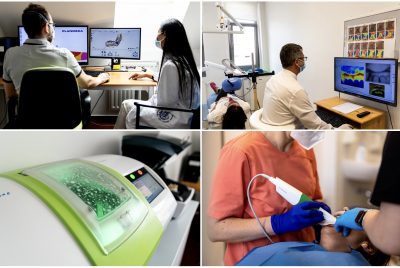
The Department of Restorative Dentistry and Endodontics is vigorously exploring several topics such as Digital Dentistry, Endodontics, Forensics, Oral Microcirculation, and Odontogenic infections.
Research zones
- Proof of concept of digital palatal morphology in human identification
- Digital restorative dentistry working group
- Dental microbiology team
- Odontogenic infections and related treatments
- Halitosis working group
- Investigation of the regulation of the gingival microcirculation